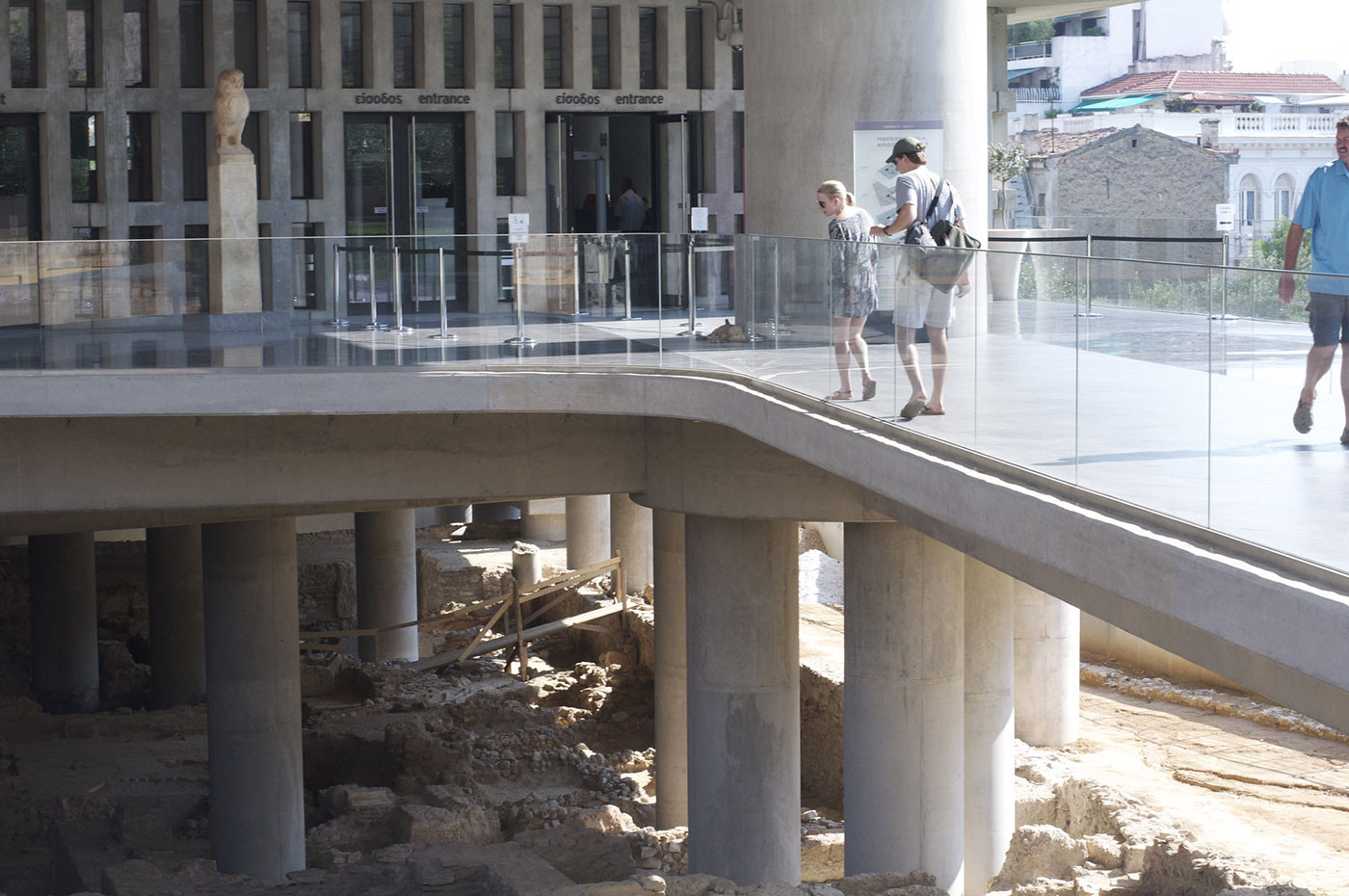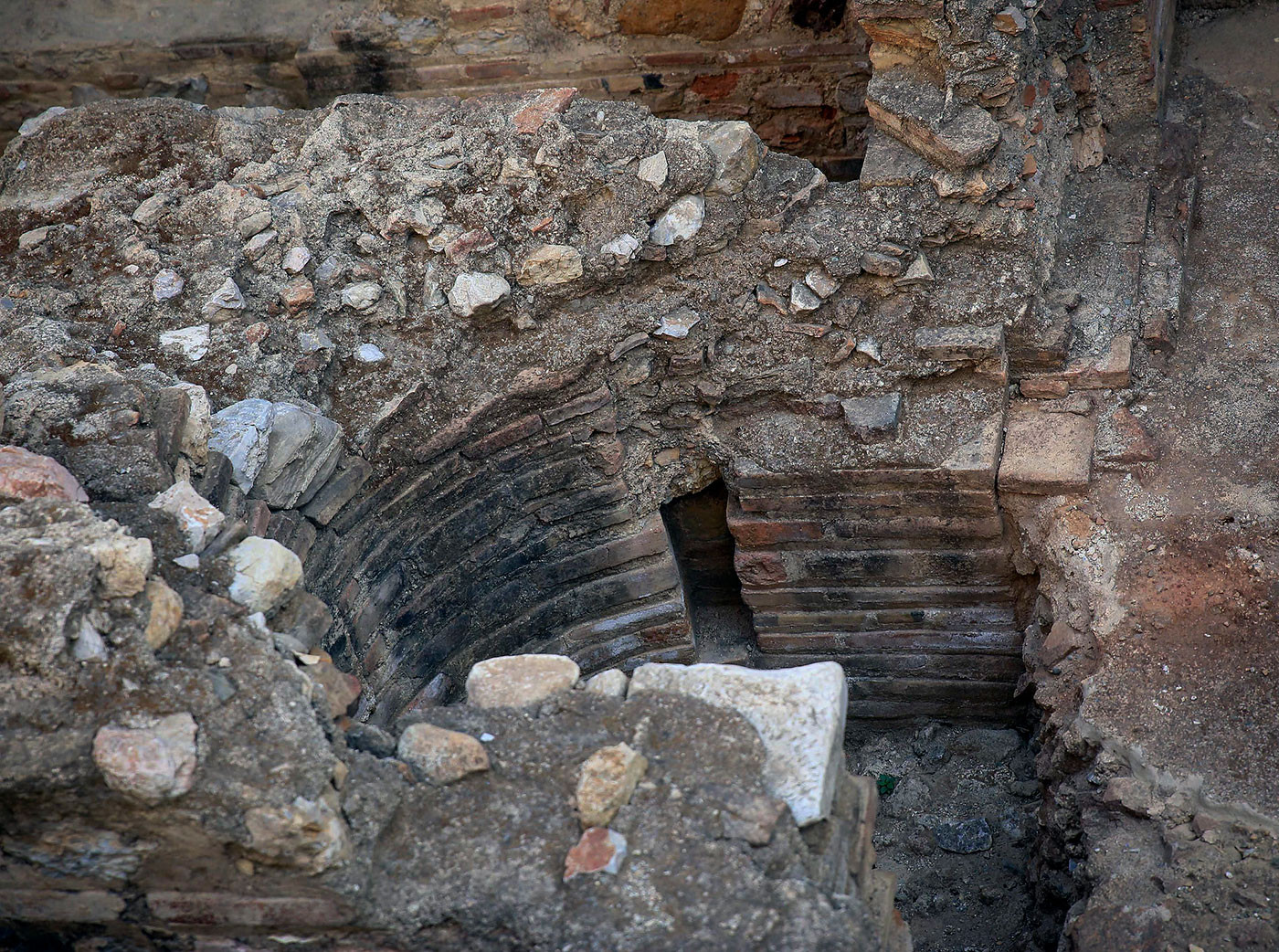The remains of streets, houses, bath houses, public latrines and workshops have been painstakingly brought to light, covering a period of organized settlement from the 5th Century B.C.E. to 12Th Century A.C.E. The opening ceremony took place on June 20 2019, to coincide with the 10 year anniversary of the opening of the museum.
This ancient site was first revealed in the late 1980’s when construction work was undertaken for the building of the new museum. Initial excavations showed the remains of the ancient urban settlement that spread over 11000 sq. meters in the Makriyianni plot of land on the southern slope of Acropolis. Construction was stopped until 2000 when new tenders were proposed, taking in consideration the archeological remains. The design by Bernard Tschumi and Mihalis Fotiadis that won the competition used large pillars to support the new building so that the museum gives the impression of “floating” above the site. The incorporation of the site gives an added dimension to the visitor’s experience of the Acropolis Museum.

You can reach the site by a footpath to the right of the museum which gently slopes down to the lower level of the city. A sign at the beginning of the lane presents the city plan with superimposed developments throughout the centuries, along with an introductory history in both English and Greek.
As you walk down the length of the raised metal walkways which follow the grid pattern of the main streets below, you are informed by signs that include plans and a short history of the various houses, public latrines, buildings and private baths that you see along the way.
Perhaps one way to appreciate better what you see is to consider the history behind this ancient neighborhood. At the end of the 5th Century BC, the area is incorporated within the walls of the City of Athens and street planning provides the infrastructure for development. The beginning of the 1st Century BC sees houses with small interior courtyards, shops and workshops occupying the area. In 86 BC, the area is devastated by the Roman general Sulla, and the site is abandoned for many years. From the middle of the 2nd century AD, the neighborhood starts flourishing again, with larger houses that have colonnaded courtyards, private wells, mosaic floors and private latrines. The richer houses have private baths. This all comes to an end when a northern Germanic tribe ravages Athens in 267 AD and destroys the site. At the end of the 4th century to the beginning of the 5th century, the area is reorganized with a variety of smaller houses of the middle class standing next to larger, more luxurious houses. For the next hundred years or so, repairs and construction of new houses continue, with one large building(Building Z on museum map)with mosaic floors and private bath being built in place of two older mansions. A new wing(Building E) is added later, which together constitutes a massive complex of 5000 sq. m., unique of its kind. The end of the 6th century sees damage and destruction and the lower level of Building E is converted into workshops. By the end of the 8th century, the whole area is abandoned. The period between the 10th-12th century sees new houses erected along with workshops which stay in use until the final abandonment of the site by the beginning of the 13th century. In the beginning of the 19th century the first military hospital of Athens known as the Weiler Building is erected on top of the ruins of building Z. Today it houses the administrative offices of the Acropolis Museum.

One of the oldest houses (House Θ) on the site gives a perfect example of the passage of time, by revealing 10 superimpositions of construction layers from the 3rd century BC right up to the 6th century AD. What is also impressive is the ancient settlement’s network of wells, cisterns, and connecting ceramic sewage pipelines which are still visible today.
Daily life was organized around a central courtyard with porticos leading to various rooms. The andron was where the host would receive guests before leading them to the triclinium where they would partake of food, drink, music, dancing or conversation, the well known symposium.
Public latrines, for those not lucky enough to have a private one, were built like small houses, serving simultaneously 7-8 people. The public baths provided a ritualistic cleansing that incorporated cold, warm and hot chambers, heated and cold water pools, and massages with scented oils. The days and hours were arranged so that men and women could use the facilities separately.

The various tombs that have been found here date back to the time before the site became an urban center or during periods of abandonment.
After finishing your tour, you cannot but admire the man hours of dedicated work that made possible this stroll through time and the daily life of people who lived in the shadow of Acropolis for millennia.
Cover Image Credit: Matt Chotin